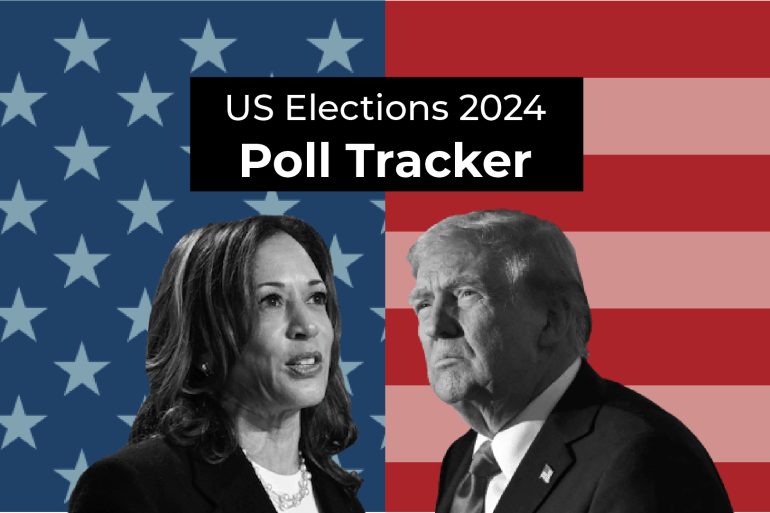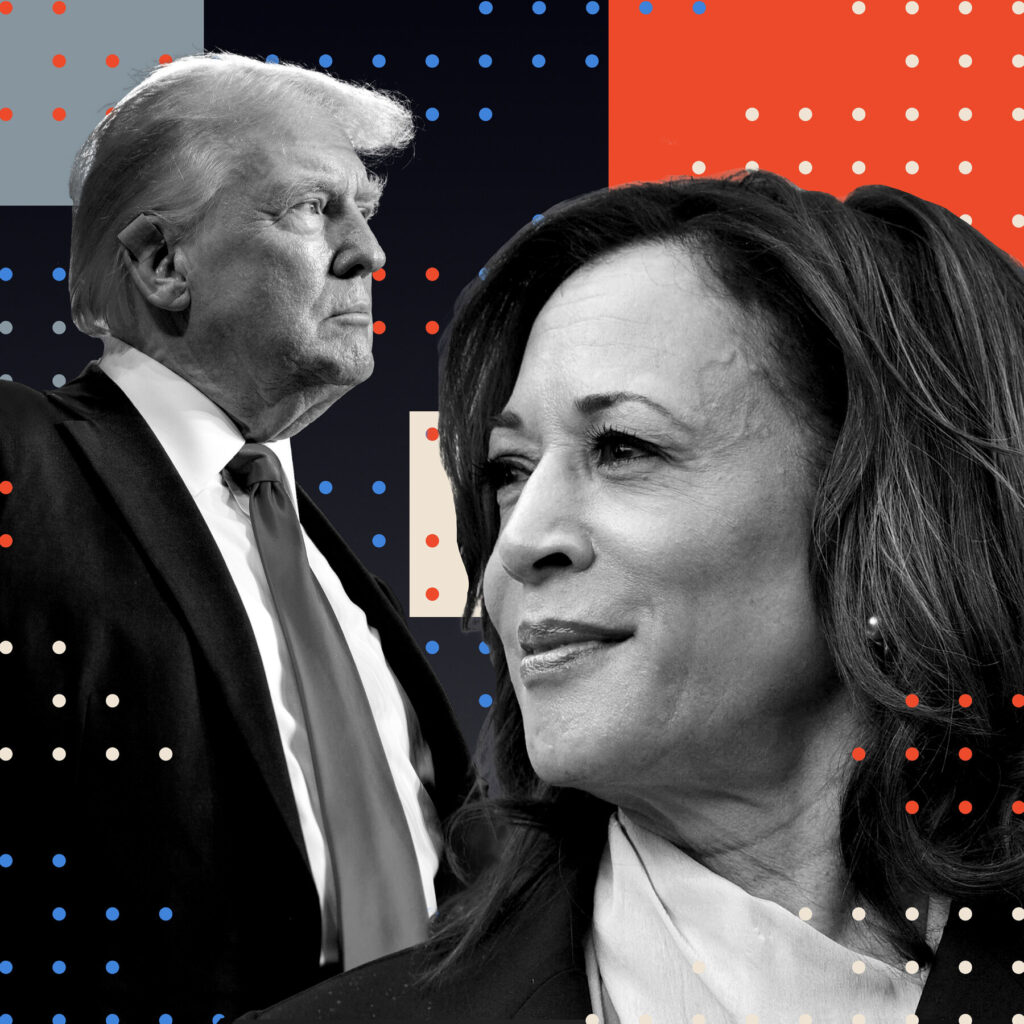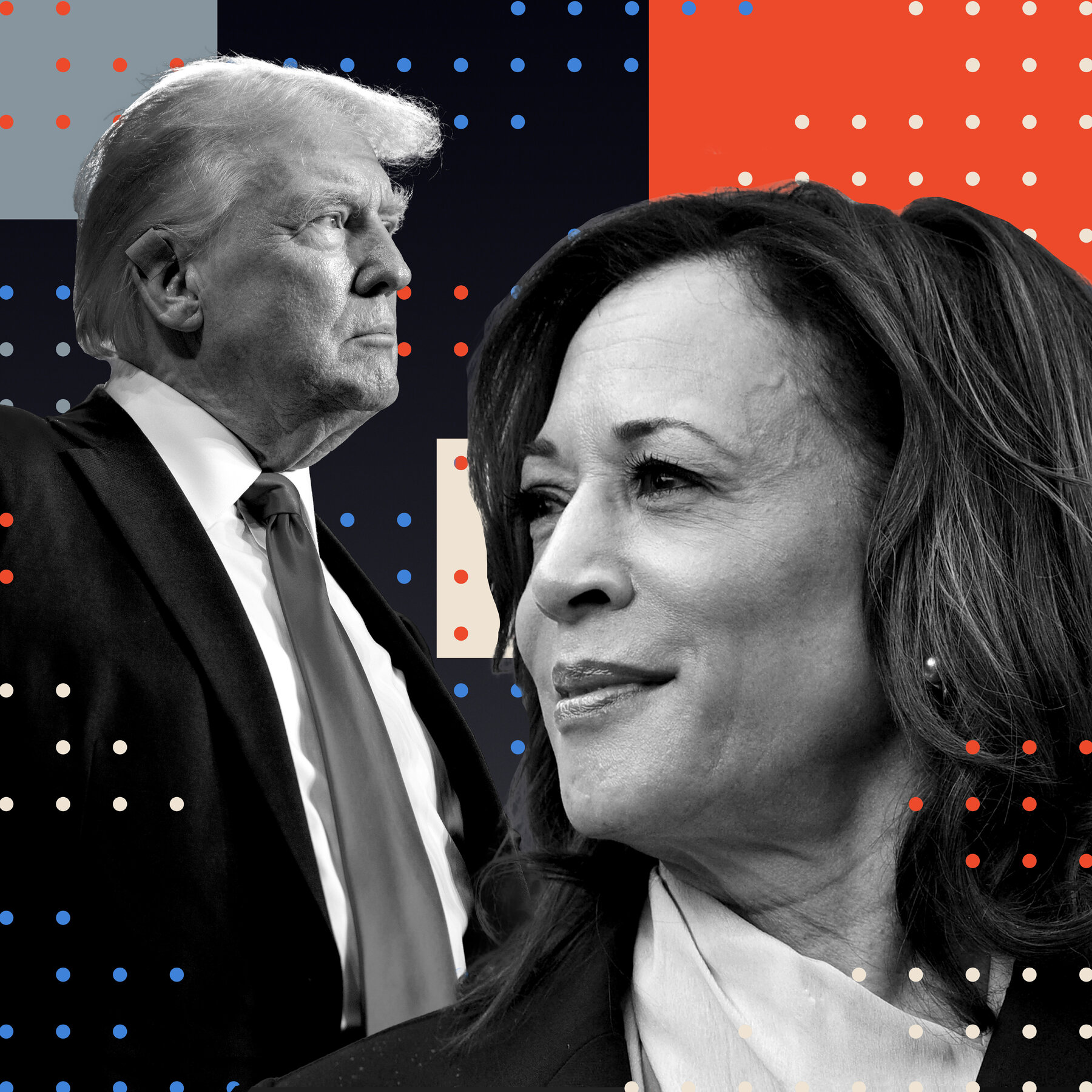Trump vs Harris: With less than a month until US voters select a new president on November 5, Al Jazeera keeps tabs on the most recent polls.

Voters will choose the new president on November 5th, marking the end of the US election campaign.
In several states, including battlegrounds like Georgia and North Carolina, early voting is already underway.
Republican former President Donald Trump and Democratic Vice President Kamala Harris are competing to influence voters who haven’t made up their minds with less than three weeks till the election.
Trump vs Harris But the winner is not determined by the public vote. Rather than choosing the president, it chooses which electors will represent each state in the Electoral College.
A contender must receive 270 of the 538 electoral votes that are up for grabs in order to win. States receive different numbers of Electoral College votes based on their respective demographics.
Who is in the lead?
Harris is currently ahead of Trump by 2.1 percentage points in the national polls, using FiveThirtyEight’s daily election poll tracker.

President Joe Biden, a Democrat, backed Harris as his successor after withdrawing from the presidential race in July. Under Biden, the vice president’s ratings were worse, but they have since increased.
The contest is still close, though. According to FiveThirtyEight’s election prediction, Trump is expected to win 46 times out of 100, whereas Harris is predicted to win 54 times out of 100.
Which states could swing the presidential election?
Trump vs Harris Battleground states, sometimes referred to as swing states, have the power to influence the results of national elections.
The unclear political leanings of a swing state, where no party enjoys overwhelming support, are one of its distinguishing features.
Arizona, Georgia, Michigan, Nevada, North Carolina, Pennsylvania, and Wisconsin are the states being attentively watched this year.
In the 2020 presidential election, Arizona saw the Democrats win by a slim margin of 0.3 percentage points, and Georgia, which had been voting Republican for almost thirty years, turned blue.
In swing states, polls indicate that Trump and Harris are in a close battle. Because the president is chosen by the Electoral College rather than the popular vote, polling in these states is more crucial to the outcome than nationwide polling.
What happens if Harris and Trump end in a tie?
There are 538 electoral votes in all. A candidate needs to receive 270 to win the election.

Trump vs Harris
Trump vs Harris Because of the way electoral votes are allocated, certain state combinations may result in a 269-vote tie. While unlikely, such a situation is conceivable.
A contingent election is held in which the winner is chosen by the US House of Representatives if no contender receives at least 270 electoral votes.
A candidate must receive a majority (26 out of 50) of the votes cast by the state delegations in the House, with each state delegation casting one vote.
The vice president would then be chosen by the US Senate, with one vote from each senator and a simple majority of votes (51 votes) needed to win.
How do polls work?
Election polls use a sample of voters to forecast the general electorate’s likely vote. The most popular methods for conducting surveys are online or over the phone. Sometimes it’s in person or through the mail.
Poll trackers, which combine several polls into one, are weighted according to several criteria, including the poll’s sample size, the calibre of the pollster, the poll’s recentness, and the specific techniques used.
How accurate are polls?

No poll is ever completely accurate. Opinion surveys understated the support of Republican candidates in the US elections in 2016 and 2020. Many people are still distrustful of polling results, even if the 2022 midterms polling was more accurate.
The ability to reach voters is one factor contributing to recent polling inaccuracies. Telephone surveys are frequently used for polling, however fewer people are likely to answer the phone. Another cause of inaccuracy is nonresponse bias; for instance, Trump supporters have declined to answer poll questions in previous years. The accuracy of polls has also been impacted by shifts in voter turnout; for instance, in 2020, turnout was significantly higher than anticipated.
Trump vs Harris
Because polls use small, chosen groups to determine the choice of a wider population, they inherently have a mathematical margin of error. The range that the actual result is likely to fall within is indicated by that margin of error in US polls. The margin of error is roughly plus or minus 3 percent for a sample size of 1,000.
The difference in support between Trump and Harris has been within the margin of error in a number of surveys taken prior to this year’s presidential election.
Source: Al Jazeera

